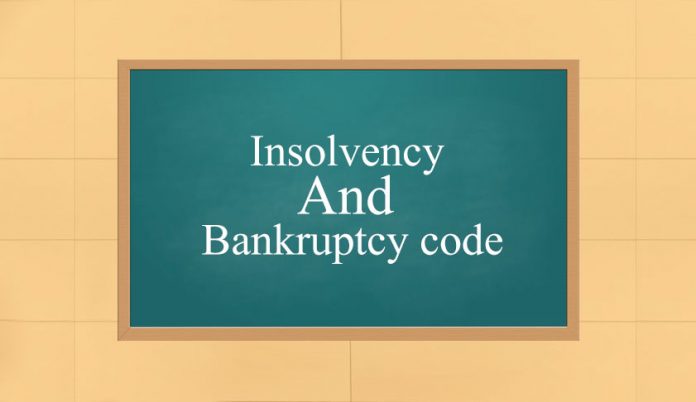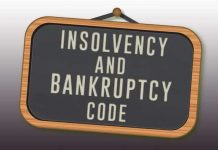This article is written by Kaushiki Keshari and pursuing a Certificate Course in Insolvency and Bankruptcy Code. This article has been edited by Tanmaya (Associate, Lawsikho).
This article has been published by Sneha Mahawar.
Table of Contents
Introduction
The most debatable section of the Insolvency and Bankruptcy Code (IBC) is Section 29A, so to understand section 29 A, we need to infer the preamble of IBC as it describes the elementary function of the law. Mere liquidation was not optioned as it was making sure the company was a going concern. Earlier if a company wanted to liquidate itself, it would take 4 to 4.5 years. However, under the Insolvency and Bankruptcy Code, it takes 330 days at most to make sure that power is transferred from the debtor to creditors ensuring that more control is in the hands of creditors which may promote more entrepreneurs to participate in the liquidation process.
The resolution process is implemented in any organization which is under some kind of financial stress or is bankrupt. In a nutshell, the resolution process is a reconstruction of an entity. Even if an organization has some kind of financial stress or is bankrupt, if an organization has to be run through going concerns, then somebody has to run the company. As per earlier laws, the old management can take up the company easily but the enactment of Section 29 A, prevented the people who were wrongdoers from taking up the company again. In this article, the author has tried to provide a detailed analysis of section 29 A of the Insolvency and Bankruptcy Code 2016.
What is Section 29 A of the Insolvency and Bankruptcy Code 2016
Section 29 A is binding on Resolution Applicant wherein a resolution applicant is defined as a person who individually or jointly with any other person, presents a resolution plan to the resolution professional following the invitation made under Section 25 (2) (h). In simple terms, a resolution applicant can be himself or a group of individuals coming together to submit the resolution plan floating to the invitation sent by the resolution professional.
Section 29A of the Code put certain restrictions for the resolution applicants to present a resolution plan. This Section does not apply to an individual – jointly or in concert with the ineligible person, person-related on connected to the ineligible person. Drop under any of the disqualification lists will not be allowed to present any resolution plan.
In the above definition, there is a word included ‘person’-Section 5 (23) of The Insolvency And Bankruptcy Code defines the term person. This definition of a person is wide. Section 29 A is a deadly section and any person falling under the negative list will not be able to apply. In the landmark judgment of Swiss Ribbon Pvt Ltd V. Union of India Section 29 A was primarily enacted, the judgment stated the primary focus of the law was to ensure improvement and maintenance of the corporate debtor by defending the corporate debtor of its management and from corporate death by liquidation.
The constitutional validity of Section 29A
While reading the Swiss Ribbon Pvt. Ltd v Union of India case, the following issues have been raised-
- the vested rights of quondam promoters to share in the recovery process of a corporate debtor has been bloodied retrospectively;
- a masking ban has been assessed on the taking part of promoters of corporate debtors without any medium to weed out those who are unconscionable, and
- the period of one time specified under Section 29A of the Law is wholly arbitrary and without any base in rationality and law;
- persons who are cousins with no business connections to quondam promoters of commercial debtors may also be barred under Section 29A (j) of the Code.
As per the above issues raised, the following compliances were enumerated.
Supreme Court’s observation
Retrospective Operation
It was stated that Section 29A of the Code had retrospectively bloodied the right of quondam promoters to share in the retrieval process for the corporate debtor. As per this argument, the Supreme Court observed that an enactment isn’t retrospective simply because it affects rights. Noting that the resolution aspirant has no vested right for consideration or blessing of its resolution plan, the Court eminent that Section 29A is not retrospective.
Section 29A (c) is not confined to misbehavior
It was argued that there is no reason to not permit a manager who is not shamefaced of malfeasance, or of doing opposite to the interest of the corporate debtor, from taking part in the resolution process. Additionally, it was stated that there were no grounds as to why during liquidation, any person, including persons unsuitable to be resolution aspirants, shouldn’t be allowed to buy any property by the liquidator by way of a public transaction.
The Supreme Court, while restating the absence of a vested right of the promoter of a corporate debtor to bid for the property of the corporate debtor, clarified that misbehaviour was not the sole ground for disqualification under Section 29A of the Code, as this section specifies other grounds based on which a person could be ineligible to present a resolution plan. Thus, there was not a single query of treating unequals as equals. The Supreme Court also held that the principles of Section 29A further pervade the process of liquidation, and there is no anomaly with the same. Accordingly, the constitutionality of Section 29A of the Law was upheld on this count.
Arbitrary period of one time as per Section 29A (c)
This particular section disqualifies a person in the operation of a corporate debtor which has remained categorized as a Non-Performing Asset as per guidelines stated by RBI for a period of one time. The period of one time specified in Section 29A (c) of the Law was confronted as arbitrary. The Supreme Court looked at the relevant RBI rules and decided that this policy could not be faulted under Clause 4 of the RBI Master Circular on Prudential Morals on Income Recognition, Asset Bracketing, and Provisioning relating to Advances (“Master Circular”). The Master Circulars vittles were held to have emerged for a period of one time, as a non-performing asset was designated as an unacceptable asset during this period. The clause was found to be neither arbitrary nor illegal because the ineligibility only applies once the one-time term has expired and the non-performing asset has been categorized as a dubious asset.
All orders of people indicated in Section 5 (24A) of the Code demonstrate that comparable persons must be associated with the resolution aspirant within the sense of Section 29A (j) of the Law, according to the Supreme Court. All order individuals in Section 29A (j) deal with people, both natural and artificial, who are involved in the resolution aspirant’s business. The Supreme Court concluded in this case that the meaning of “associated party” in Section 5(24A) must be construed with noscitur a sociis with the categories of individuals listed in Explanation I and must only include those who are involved with the resolution applicant’s economic activity. The Court further concluded that in the absence of evidence indicating such a person is associated with the resolution applicant’s business or activity, such a person cannot be disqualified under Section 29A. (j).
Micro, Small, and Medium Enterprises (“MSME”) Impunity from the Section 29A viewpoint
The exemption of MSMEs from the application of Sections 29A (c) and 29A (h) of the Law was questioned on constitutional grounds. MSMEs should be exempted from the dimensions of Section 29A (c) and 29A (h), according to the Insolvency Law Committee’s report, because the business of an MSMEs often receives attention solely from its promoters and not from other stakeholders. MSMEs have been exempted from the application of Sections 29A (c) and 29A (h) of the Law to ensure that there are enough openings to resuscitate the businesses. While affirming the legitimacy of the impunity, the Supreme Court also noted that the council is aware of major irregularities. Also, section 29A(c) was amended to include the phrase ‘at the time of submission’, Thus the disqualification under Section 29Awill only be examined at the time of submission of resolution application.
Conclusion
The Supreme Court’s ruling has helped to clarify some of the difficult issues surrounding the interpretation of Section 29 A of the Code. Section 29A identified additional reasons on which a person may be disqualified to submit a resolution plan. As a result, there was no issue of treating unequal as equals, making it constitutional. The court has examined the implications of Section 29A from time to time and made every effort to overcome technicalities so that the corporate debtor receives the greatest possible rehabilitation choice.
References
- https://taxguru.in/corporate-law/person-ineligible-section-29a-ibc-propose-scheme-compromise-arrangement-section-230-companies-act-2013.html
- https://www.mondaq.com/india/insolvencybankruptcy/863066/supreme-court-upholds-the-constitutionality-of-ibc-ribbon-of-hope
- http://www.argus-p.com/papers-publications/thought-paper/supreme-court-upholds-the-constitutionality-of-ibc-ribbon-of-hope//
- https://www.iiipicai.in/wp-content/uploads/2021/02/IIIPI-Case-Study-Essar-Steel-India-Limited.pdf
- https://ibclaw.in/section-29a-persons-not-eligible-to-be-resolution-applicant/
- https://indiankanoon.org/doc/17372683/
Students of Lawsikho courses regularly produce writing assignments and work on practical exercises as a part of their coursework and develop themselves in real-life practical skills.
LawSikho has created a telegram group for exchanging legal knowledge, referrals, and various opportunities. You can click on this link and join:
Follow us on Instagram and subscribe to our YouTube channel for more amazing legal content.












